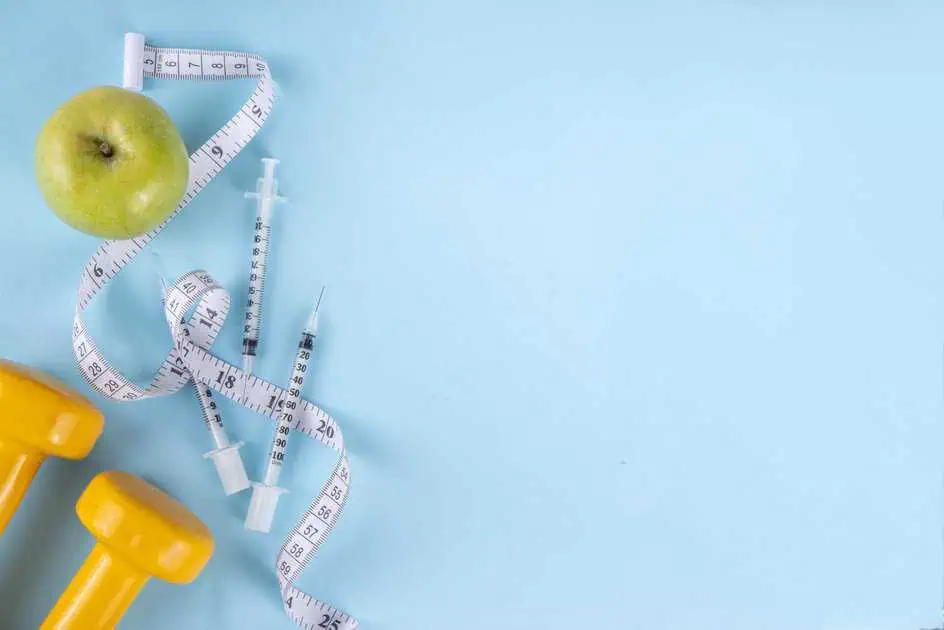If you want to lose weight and keep it off, understanding the basics of nutritional planning is critical. It isn’t about quick fixes or following the latest diet fad. It’s about learning how your body works with your food and using that knowledge to make intelligent choices. Effective long-term weight loss isn’t just about cutting calories; it’s about ensuring your body gets the right fuel.
The goal here is long-term success. We’re not just talking about shedding pounds but about making lasting changes that improve your health and well-being.
Setting Realistic Weight Loss Goals
Setting realistic weight loss goals is fundamental in your journey towards a healthier lifestyle. This process goes beyond just picking a number on the scale; it involves understanding your body and setting achievable and beneficial targets for you.
- Individual Differences: Setting realistic weight loss goals begins with recognizing that each body is unique. Your age, gender, metabolic rate, and lifestyle all affect how your body responds to diet and exercise. What works for someone else might not suit you, so find a balance tailored to your personal needs.
- Embracing Gradual Change: Rapid weight loss can be unhealthy and unsustainable. Health professionals often recommend losing 1 to 2 pounds per week, a rate that allows your body to adjust naturally and is more likely to lead to long-term weight management. This approach emphasizes gradual, consistent change over quick fixes.
- Focusing Beyond the Scale: True health isn’t just about the numbers on a scale. Setting goals related to overall well-being, like better fitness, improved sleep, or healthier eating habits, is vital. These goals promote a holistic approach to health, where weight loss is part of a broader commitment to wellness.
- Being Flexible and Adaptable: Your body and life circumstances will change as you progress in your weight loss journey. Be prepared to reassess and adjust your goals accordingly. Staying flexible and kind to yourself is critical to creating a sustainable, healthier lifestyle. Remember, setting realistic goals isn’t just about reaching a certain weight; it’s about cultivating a balanced lifestyle for the long term.
Developing a Personalized Nutritional Plan
Developing a personalized nutritional plan is crucial for effective and sustainable weight loss. This process involves tailoring a diet plan to your individual needs, preferences, and lifestyle, ensuring that it’s effective for weight loss and enjoyable and sustainable in the long term.
- Assessing Individual Dietary Needs: The first step is understanding your dietary requirements. It varies depending on several factors such as age, gender, current weight, activity level, and any existing health conditions. Consulting with a healthcare professional or a registered dietitian can provide valuable insights into your body’s needs. They can help you understand how many calories you should consume for weight loss and what balance of macronutrients (proteins, carbohydrates, fats) and micronutrients (vitamins and minerals) you require.
- Creating a Balanced Diet: A personalized nutritional plan should include a variety of foods from all food groups to ensure you’re getting a balanced mix of nutrients. It consists of a healthy balance of fruits, vegetables, whole grains, lean proteins, and healthy fats. It’s not just about cutting out certain foods or food groups; it’s about finding more beneficial ways to enjoy your favorite foods and discovering new, nutritious foods to add to your diet.
- Portion Control and Food Labels: Understanding portion sizes and reading food labels is critical to managing your diet. Learning to measure portions accurately and being aware of foods’ calorie and nutrient content can help you make informed choices.
- Adapting to Lifestyle and Preferences: Your nutritional plan should also consider your lifestyle and food preferences. It could mean finding healthy recipes that align with your culinary tastes, planning meals that fit your schedule, or finding ways to make healthy eating convenient. The more your diet plan aligns with your personal preferences and lifestyle, the more likely you will stick with it in the long run.
Incorporating Physical Activity into Your Plan
Incorporating physical activity into your weight loss plan is a critical component that goes hand-in-hand with nutritional planning. Exercise helps burn calories and improves overall health, including cardiovascular fitness, muscle strength, and mental well-being. Finding the right balance of physical activity that complements your dietary changes is essential for effective long-term weight loss.
- Understanding the Role of Exercise in Weight Loss: While diet plays a crucial role in weight loss, physical activity helps to boost your metabolism, build and maintain muscle mass, and burn extra calories. Regular exercise can also help you maintain your weight loss over time. It’s important to remember that exercise doesn’t just mean going to the gym; it includes any form of movement that increases your heart rate and makes you breathe harder.
- Finding Activities You Enjoy: The key to sustaining regular physical activity is engaging in exercises you enjoy. It could be anything from walking, cycling, swimming, group fitness classes, or team sports. Enjoyable activities are more likely to be incorporated into your daily routine and less likely to feel like a chore.
- Setting Realistic Exercise Goals: Start with what you can manage, even if just a few minutes a day, and gradually increase the duration and intensity as your fitness improves. Overly ambitious goals can lead to disappointment or injury, especially if you are new to regular exercise.
- Integrating Exercise into Your Daily Routine: Incorporating physical activity into your daily life can be more effective than designated workout times. Simple changes like taking the stairs instead of the elevator, walking or cycling to work, or even doing household chores can increase your daily activity levels.
- Combining Cardio and Strength Training: A balanced exercise routine includes cardio (aerobic) exercises and strength training. Cardio exercises like running, swimming, or cycling are great for burning calories and improving heart health. In contrast, strength training like weight lifting or resistance exercises helps build muscle mass and enhance metabolism.
Takeaway
Are you ready to embark on a journey towards sustainable weight loss and healthier living? With Forever Weight Loss, you’re not just looking at a temporary fix but a lifelong transformation. Remember, while the basics of nutritional planning and incorporating physical activity are great starting points, personalization is the real key to success. Each individual’s journey is unique, and so should the approach to weight loss.
If you’re serious about making lasting changes, consider seeking professional help. Nutritionists, dietitians, and fitness experts can provide tailored advice that aligns with your needs, preferences, and lifestyle. They can help you understand the intricacies of your body, craft a customized nutritional plan, and recommend an exercise regime that’s not just effective but also enjoyable. Call or contact us today to see if our weight loss program may benefit you.






